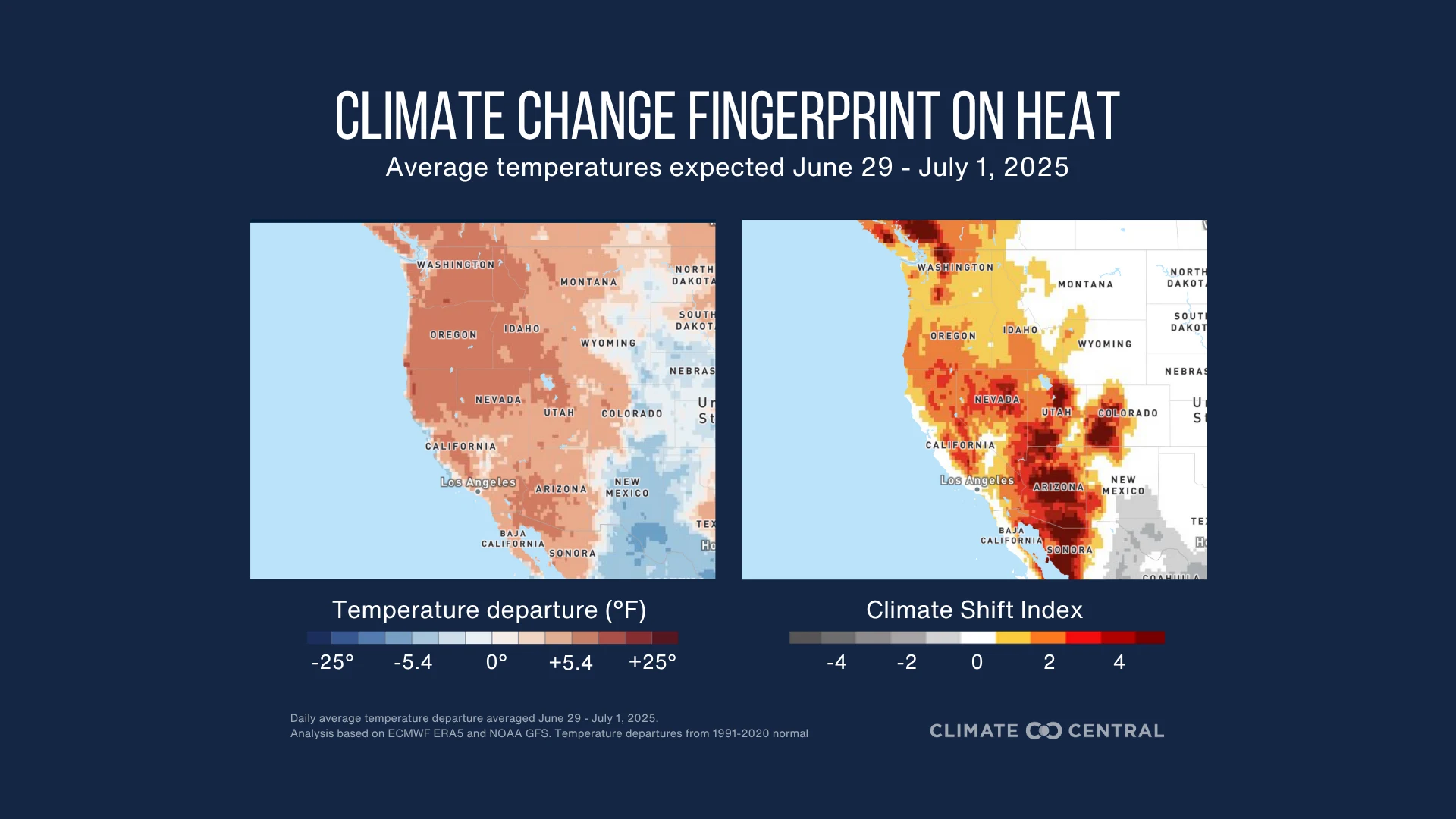Climate Shift Index Alert•June 30, 2025
Climate change made western heat five times more likely
The Western United States braces for another round of extreme heat from June 29 to July 1, with impacts to several major cities and more than 20 million people. Analysis from Climate Central shows that this heat wave was made two to five times more likely due to human-caused climate change.
Note: This event may continue beyond July 1. Use the Global Climate Shift Index map to stay updated on heat in your region.

How unusual is the forecasted heat?
High temperatures are forecast to run 5-10°F above average (based on 1991–2020 climate normals) across the Southwest during this multi-day period, with even larger departures up to 15°F warmer than average across Idaho, Oregon, and Washington.
The National Weather Service has issued extreme heat warnings across the Phoenix metropolitan area for afternoon temperatures reaching 110-116°F from Sunday through Tuesday.
Overnight temperatures may not drop below 90°F in some parts of Phoenix and the surrounding deserts. Across the West, low temperatures are expected to be 5-15°F above average.
Summer nights have warmed by 6.5°F in Phoenix since 1970 due to climate change and the urban heat island effect. This causes an increase in the risk of heat stress and other health impacts, especially for vulnerable communities.
A large ridge of high pressure across the West is responsible for the widespread levels of intense heat, which stretches from Washington to Arizona.
How do we know climate change is influencing this [heat]?
Climate Shift Index (CSI) levels of 5 — the highest possible — are forecast from Washington to Arizona, meaning human-caused climate change made this extreme heat at least 5 times more likely. This signals an exceptional climate-influenced event.
Over the full period, 12 million people across the Western United States will experience at least one day with a CSI of 3 or higher, indicating a strong influence from climate change.
What do experts say?
Dr. Zachary Labe, climate scientist at Climate Central, said:
“The West is already one of the fastest-warming regions in the United States during the summer season. A Climate Shift Index level of 5 shows how climate change is dramatically increasing the risk of dangerous heat waves like this one for millions of people. These threats will only worsen without a rapid reduction in the burning of fossil fuels.”
To request an interview with a Climate Central scientist, please contact Abbie Veitch at aveitch@climatecentral.org.
How do we know climate change is influencing this heat?
The Climate Shift Index uses peer-reviewed methodology and real-time data to estimate how climate change has increased the likelihood of a particular daily temperature.
Reporting resources
For quick facts about extreme heat in the U.S. → Extreme Heat Toolkit
For an in-depth guide about how to report on attribution science and extreme weather types → World Weather Attribution’s reporting guide
For the latest research-backed messaging to use while reporting on climate change →Potential Energy’s Guide to Reporting on Unnatural Disasters
